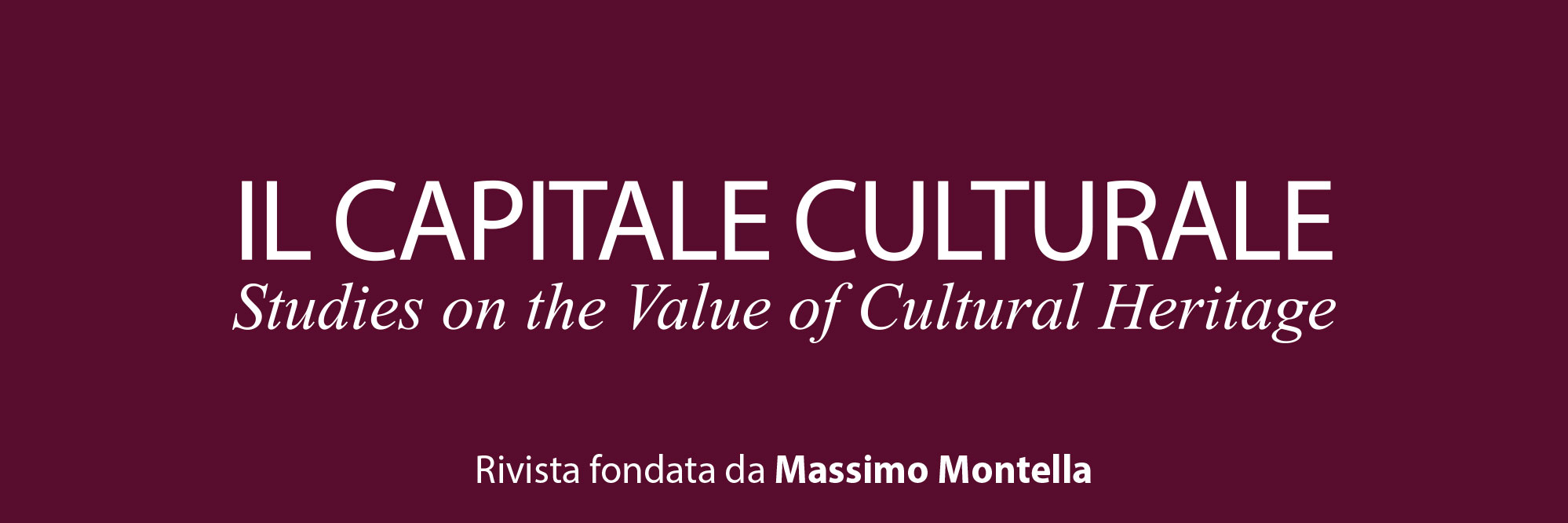Polysemic Hercules: Gustave Moreau & Ovid’s Metamorphoses
Downloads
Pubblicato
Fascicolo
Sezione
Licenza
Tutti i materiali pubblicati sono coperti da copyright, mantenuto dall'Università di Macerata che ne supporta finanziariamente e tecnicamente la pubblicazione.
La licenza adottata è la Creative Commons - Attribuzione/Condividi allo stesso modo. Ovvero, gli autori che pubblicano su questa rivista accettano le seguenti condizioni:
- Gli autori mantengono i diritti sulla loro opera e cedono alla rivista il diritto di prima pubblicazione dell'opera, contemporaneamente licenziata sotto una Licenza Creative Commons - Attribuzione che permette ad altri di condividere l'opera indicando la paternità intellettuale e la prima pubblicazione su questa rivista.
- Gli autori possono aderire ad altri accordi di licenza non esclusiva per la distribuzione della versione dell'opera pubblicata (es. depositarla in un archivio istituzionale o pubblicarla in una monografia), a patto di indicare che la prima pubblicazione è avvenuta su questa rivista.
- Gli autori possono diffondere la loro opera online (es. in repository istituzionali o nel loro sito web) prima e durante il processo di submission, poiché può portare a scambi produttivi e aumentare le citazioni dell'opera pubblicata.
DOI:
https://doi.org/10.13138/2039-2362/3277Abstract
The nineteenth-century French painter Gustave Moreau owned a French edition of Ovid’s Metamorphoses translated by Pierre du Ryer in 1660. This text was a significant source for Moreau’s painting, Hercules and the Lernaean Hydra (1875-76). I offer a close reading of Ovid’s Hercules cycle in relation to the artistic choices and meaning of Moreau’s painting. When Ovidian themes are understood in relation to Moreau’s Hercules, connections can be made between this painting and its companions, Salome Dancing before Herod and The Apparition, both of which Moreau debuted with Hercules in the Salon of 1876 and the Exposition Universelle of 1878. Conceived together, these three images juxtapose masculine virtue versus feminine vice. Although Moreau explored dichotomous and essentializing typologies in these works, his more personal drawings and studies are ambiguous. This imagery hints at the artist’s attempts to find meaning by exploring the spaces in between the very binarily-defined typologies that his own official art sought to define.
Riferimenti bibliografici
Allan S.C. (2021), Dejanira (Autumn), «Collection: J. Paul Getty Museum», Los Angeles: J. Paul Getty Trust <https://museum-essays.getty.edu/paintings/sallan-moreau>, 28.06.2023.
Bagenal C.J. (1988), Gustave Moreau’s Hercules and the Hydra, Master’s thesis, School of the Art Institute of Chicago.
Capodieci L. (2002), Correspondance d’Italie, Paris: Somagy éditions d’art.
Cooke P. (2002), Écrits sur l’art, préface de G. Lacambre, 2 vol., Fontfroide: Bibliothèque artistique et littéraire, Fata Morgana.
Cooke P. (2009), Gustave Moreau and the Reinvention of History Painting, «Art Bulletin», 90, n. 3, pp. 394-416.
Cooke P. (2011), It isn’t a Dance’: Gustave Moreau’s Salome and The Apparition, «Dance Research: The Journal of the Society for Dance Research», 29, n. 2, pp. 214-232.
Cooke P. (2014), Gustave Moreau: History Painting, Spirituality, and Symbolism, New Haven: Yale University Press.
Hunt L. (1983), Hercules and the Radical Image in the French Revolution. «Representations», n. 2, pp. 95-117.
Huysmans J.K. (1977), À rebours, 1884, edited by M. Fumaroli, Paris: Gallimard.
Huysmans J.K. (1998), À rebours, 1884; trans. Eng. by M. Mauldon, Against Nature, Oxford: Oxford University Press.
Kaplan J. (1974), Gustave Moreau, exhibition catalogue (Los Angeles, Los Angeles County Museum of Art, 23 July – 14 September 1974) Los Angeles: Los Angeles County Museum of Art.
Kaplan J. (1982), The Art of Gustave Moreau: Theory, Style, and Content, 2nd ed., Ann Arbor: University of Michigan Research Press.
Lacambre G. (1999), Gustave Moreau: Between Epic and Dream, exhibition catalogue
(Paris, Galeries Nationales du Grand Palais, 29 September – 4 January 1999; Chicago, Art Institute, 13 February – 25 April 1999; New York, Metropolitan Museum of Art, 1 June – 22 August, 1999) Chicago: The Art Institute of Chicago with Princeton University Press.
Lacambre G. (2008), Gustave Moreau et son édition de 1660 des Métamorphoses d’Ovide «Bulletin de la Société de l’histoire de l’art français, année 2007», pp. 343-352.
Lafenestre G. (1876), Le Moniteur universel, May 12.
Lippert S. (2014), Salomé to Medusa by Way of Narcissus: Moreau and Typological Conflation, «Artibus et Historiae», 35, n. 69, pp. 233-266.
Mainz V. (2020), Hercules, His Club and the French Revolution, in The Exemplary Hercules from the Renaissance to the Enlightenment and Beyond, edited by V. Mainz, E. Stafford, Leiden and Boston: Brill, pp. 293-319.
Mathieu P. (1976), Gustave Moreau, sa vie, son œuvre. Catalogue raisonné de l’œuvre achevé, Fribourg: Office du livre.
Mathieu P. (1976). Gustave Moreau, sa vie, son œuvre. Catalogue raisonné de l’œuvre achevé, Fribourg: Office du livre, 1976; trans. Eng. by J. Emmons, Gustave Moreau with a Catalogue of the Finished Paintings, Watercolors, and Drawings, Boston: New York Graphic Society.
Mathieu P. (1978), La Bibliothèque de Gustave Moreau, «Gazette des Beaux-Arts», pp. 155-162.
Mathieu P. (1985), Gustave Moreau: The Watercolors, New York: Hudson Hills Press.
Mathieu P. (1998), Gustave Moreau: monographie et nouveau catalogue de l’oeuvre achevé. Courbevoie: ACR Édition Internationale.
Ménard L. (1863), Du polythéisme hellénique, Paris: Charpentier, Libraire-Éditeur.
Ryer P. (1660), Les Metamorphoses d’Ovide, divisees en XV livres, trans. Fr., Paris: A. de Sommaville.
Selz J. (1979), Gustave Moreau, trans. Eng. by A. Sachs, New York: Crown Publishers.
Wuttke D., Virey-Wallon A. (2007), Panofsky et Warburg. ‘L’Hercule à la croisée des chemins’ d’Erwin Panofsky: L’ouvrage et son importance pour l’histoire des sciences de l’art, «Artibus et Historiae», 28, no. 56, part 2, pp. 49-72.




